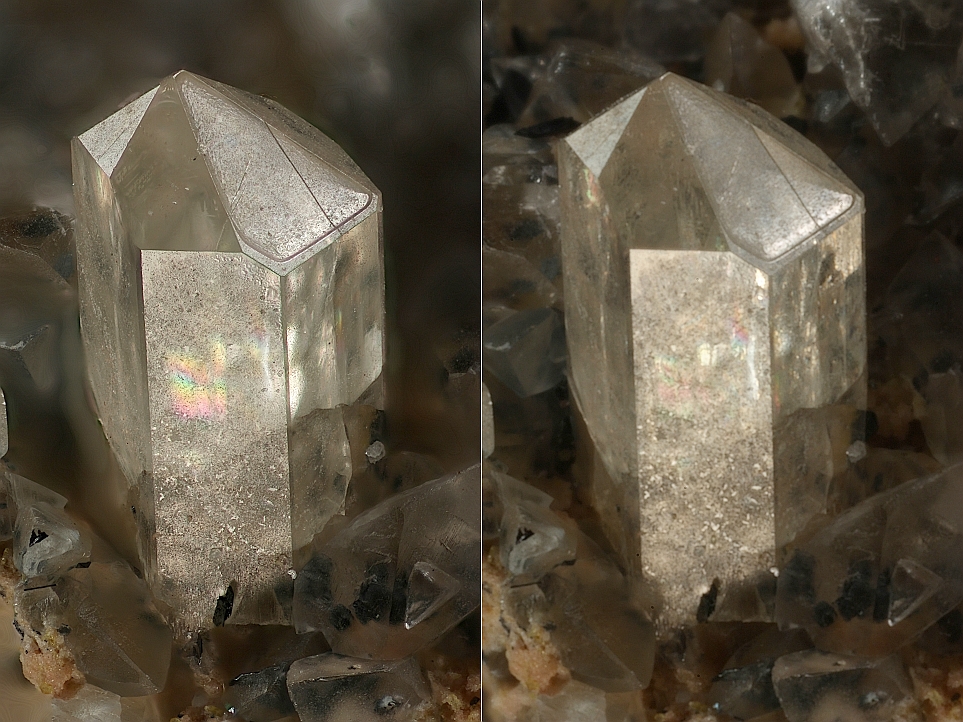| Definition | History | Zeolite-species | Morphology | Occurrences | Literature |
| Links | Exchange | Sales | Photography | Impressum | Home |
The Zeolite Homepage of Volker Betz
The advantage of focus stacking in the close up rangeof mineral photography - without perspective distortion.
|
Focus stacking ( or multifocus
processing) is a valuable procedure for photographing small objects.
For larger objects it is not so frequent used as closing the aperture
seems to be an alternative. Unfortunately in most cases closing the
aperture also reduces sharpness due to diffraction at the aperture.
In the range of 2 to about 10 cm and the use of a macro lens which
can do a 1:1 scale a f-stop of about 8 is a good compromise for
sharpness (see:
Mindat- acticle).
For a field of view of about 10 cm the depth of focus (DOF) with a f-stop of 8 is only around 1-2 cm as can seen on the photo of a metal-barrel. Often this is not enough for three dimensional objects. Focus stacking allows to enhance the DOF as much as needed, as can be seen on the two examples of stacked pictures. With a macro lens stacking can be done in two ways:
The is no significant difference on the perspective of the pictures as can be seen at the sample pictures. There is also no visible distortion of the perspectives with smaller (5mm) field of view. (see apatite picture below) |
 |
|
Metal-barrel of 6x3x2.5 cm (FOV 5.5 cm) photographed with a Canon EF-S60 mm f/2.8 Macro USM at a f stop of 8 and 1/40 sec. exposure time. Halogen-light with diffusors. Only the middle part of the barrel is in focus. |
 |
|
Stacked (4-5 exposures) pictures of the metal barrel. Left by using a focusing rail, right by changing lens focus. The sizes are different as the stacking software (Helicon Focus) adjust to the closest and largest picture. |
 |
|
Apatite crystal , 4 mm long from Nuestra Señora del Carmen Mines, La Celia, Jumilla, Murcia, Spain. Photographed with Canon Macro Photo Lens 35 mm 1:2.8 with bellows. Right picture: f-stop 22, ¼ sec. exposure time, left picture: f-stop 2.8, 1/200 sec, 36 layers of 0.05 mm distance processed with Helicon focus method B. DOF extended to 1.9 mm. Both pictures optimized with Helicon Filter (identical parameters). Light source: Halogen-light with diffusor. There is no difference in the perspective, while the stacked picture shows much more details and visual sharpness. |
|
Conclusion: focus stacking improves picture quality and is worth to be considered for larger mineral objects of cabinet size. Distortion of the perspective could not observed in the FOV range from 5 mm to above 5 cm. For smaller objects a comparison of stacked and non stacked pictured is difficult to realize, due the insufficient DOF of non stacked pictures. It can be assumed that distorted perspective of very small objects may have other reasons than picture stacking. |
TOP
© 2009-2011 by Volker Betz, all rights reserved